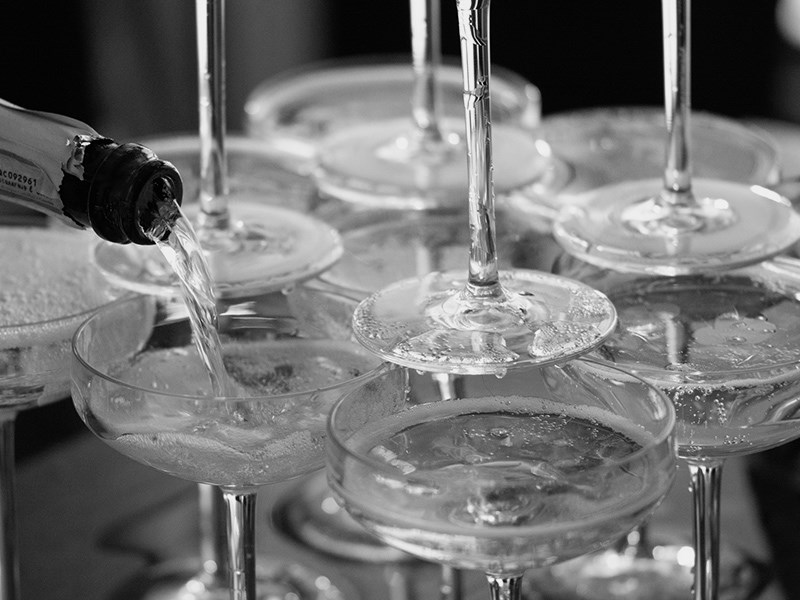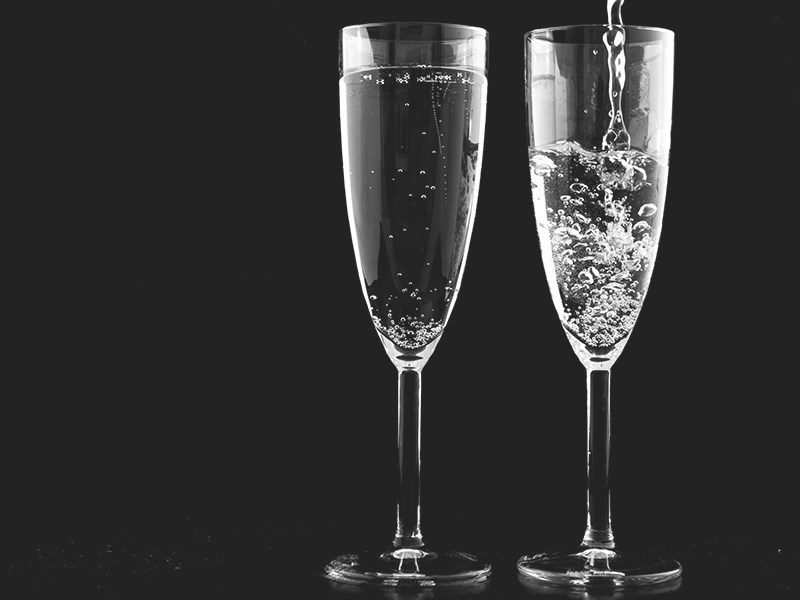Article - RareWine Academy
What Wine Glass To Use?
A glass is a glass. Or is it? Not really when it comes to choosing a wine glass. But how to choose the right one and what is really the difference? Find out here...
A glass, is a glass! No, not really, not when it comes to a wine glass. The wine glass is our most important tool to understand the winemaker’s ideas. It easily gets complicated, but it’s wine after all. With this guide, you will either conclude that you can "settle" with 5 different wine glasses at home, or that you will have to own a minimum of 12 different glasses to embrace all the grapes in the world. Congratulations on your new cabinet - only for wine glasses.
Make Your Own Glass Tasting At Home
The design of the glass is certainly not indifferent. The design can have a huge impact on both the smell and the tasting experience. In fact, to such an extent that so-called glass tastings are held in several places, where you taste the same wine, but in different types of glasses.
If you are still not convinced, then there is an easy test. Choose 3 different glasses: a standard glass for water, a small wine glass, and a large wine glass. Pour the same wine into all three glasses. Smell and taste the wine, then you will soon find out, that there is a huge difference in both aroma and taste.
The extended test involves pouring the same wine into 3 glasses of roughly the same size, but with a different design. It can be a glass suitable for high tannin wines such as cabernet sauvignon, one for pinot noir, and one for syrah. If you then choose to pour a good Bordeaux, or Burgundy, into these three glasses then you will find that the more specific the glass is, the better the wine is expressed.
Specialists In The Production Of Wine Glasses
Today we know how essential the glass is in relation to the taste of the wine. For many years, a simplistic reality was assumed: small glasses for white wine, slightly larger for red wine, and all sweet wine could then come in a shot glass at the end. Today we know that white wines can have the same complexity as red wine, which is why it needs just as much attention when choosing the proper wine glass.
Today, there are companies that specialize in producing grape-specific glasses, such as Riedel. For many years, they have done a great deal of marketing work to bring focus to the right glasses. In recent years, a company like Zalto has arrived on the scene with some almost extreme glasses; both thin and elegant. In addition, there are several glass producers who produce really good wine glasses, for every occasion. Other producers, like Riedel, end up having full focus on a particular type of wine while others produce glasses that fit a wider range of wines.
We start by ignoring grape-specific glasses and relate to how an ordinary household can survive with less than 50 different glasses in the home. Below we have collected some simple rules of thumb that you can follow without ruining yourself from buying wine glasses.
 The classic coupe glass. Perfect for building those Champagne pyramids
The classic coupe glass. Perfect for building those Champagne pyramids
Wine Glasses For Champagne
Champagne glasses can be a whole science in itself. Especially these years where we see strongly divided opinions even among connoisseurs. Historically, there has been either a coupe or a flute.
Coupe is the flat very open glass, which in the old days was also given a champagne whip, so you could whip the last bubbles out of the wine. Today, this glass is most often seen when stacking pyramids for serving. The coupe glass is definitely more for fun, than for enjoying Champagne.
Flûte is a tall very slim glass, which is perfect for showcasing the bubbles in Champagne. Unfortunately, it can be difficult to pick up any aroma from this kind of glass. But, it looks nice and you rarely spill when you stand with it in your hand for a reception.
White wine glasses are the serious wine lover's choice for Champagne today. With this glass, you might compromise on the bubbles, but you get much more aroma and character from the wine. In an extreme world, one can argue that Champagne is Burgundy with bubbles and therefore should be served in a Burgundy glass.
The beautiful and optimal choice/compromise is made by several different glass manufacturers today. We can call it an open version of the classic flûte. Both Riedel and Zalto have versions that are more open and that stylistically end between flûte and white wine glass. Here you preserve, and highlight, the bubbles, while giving the opportunity to get the full aroma and taste.
The Right Wine Glass For White Wine
We can roughly divide white wine into two types; aromatic wines like sauvignon blanc and riesling, as well as non-aromatic wines like Chardonnay and Chenin blanc. Often the latter will also have a greater influence from barrel aging, which also comes into play.
For the aromatic wines, glasses that are slenderer and upright are recommended. They highlight the aromas on the nose, as well as balance the acidity when you drink.
For the full-bodied, less aromatic wines, it’s essential that the wine really has room to work. A larger and more open glass is recommended for these wines. Often you will use the same Burgundy glass for both your white and red Burgundy wines.
 The Champagne flute - maybe the most recognized and used glass for Champagne and other sparkling wines in the world
The Champagne flute - maybe the most recognized and used glass for Champagne and other sparkling wines in the world
Choose The Right Glass For Red Wine
If you want to make a rough separation for red wines, then we normally look at the tannin structure in the wine. Grapes like cabernet sauvignon have a lot of tannins and show best in a relatively slim glass with a so-called tulip shape. Here you tame the tannin and acid for when you need to taste the wine and at the same time you achieve that the aromas are gathered in an optimal way when you smell the wine.
Other more open wines, often with a more aromatic style, such as pinot noir or barbera, need a more open glass. The open glass highlights the aromas in the wine. When it comes to more powerful wines, such as syrah, a slightly sharper glass is often a good idea to open up the deeper aromas in the wine.
Wine Glass For Dessert Wine
Dessert wine has traditionally been referred to as the smallest glass - and what a shame. Late-harvested types, such as Sauternes, Passito, and German Rieslings, are extremely complex wines that deserve to be served in at least a white wine glass. Many of these wines will show perfectly in a glass suited for aromatic wines.
When we focus on fortified wines like port wine, or similar types, then a small red wine glass or a white wine glass will often be an excellent choice. Often these wines have a lot of layers, that are easily missed if they come in a small glass.
Grape-specific Glasses
In this category, Riedel from Austria has been by far the most prominent glass producer for several generations. They have developed glasses in collaboration with the best wine producers, from the areas where the grapes perform best. This has produced some amazing glasses, which are specially adapted for fx syrah grown in the northern Rhone - like Hermitage or Cote-Rotie. These glasses have been a reference point within this category and still are today.
The newest players on the field, such as Lehmann and Zalto, have seen the problem of having a lot of different glasses for each wine. Therefore, they have chosen to design a little more focused, to capture several types of wine in the same glass. Zalto, for example, has only three different glasses of red wine. Often, glasses from these producers will be excellent at showing the nuances of different wines.
As we move into the category of glasses that are more universal, it often becomes an almost religious question of which company each taster prefers. As a starting point, there seem to be similarities between how much attention you pay to your wine glasses and how much you get out of the wine.
How Far Do You Go For The Good Taste?
We recommend that you do your experiments and find your own borders of madness. Find a glass that you feel comfortable with, and that you enjoy sitting with where you drink wine. Just because wine geeks say one thing, you can have your own opinion.
You can easily sit on a beach and drink Chateau Lafite-Rothschild from a plastic cup and enjoy it with a big smile. And most people probably also know of sitting in a fancy restaurant with well-polished perfect glasses, without enjoying the wine. The people, the moment, and your mood may be more decisive for how much you enjoy the wine, but it is indisputable that the type of glass can influence your judgment.
